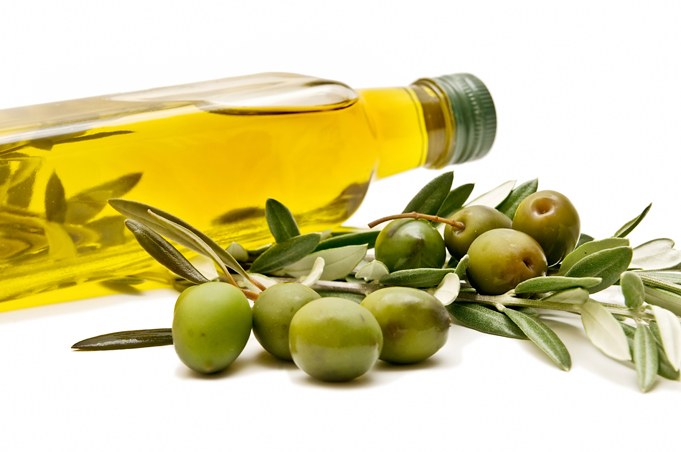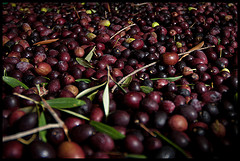As you know, one the most important staples in any chef’s kitchen is olive oil. Not only is this a great way to add flavor, it has many health benefits as well. Olive oil originates from the Mediterranean region and has long been used for many purposes such as cooking, skin moisturizers, and other beauty products. Within the last decade or so, the benefits of olive oil have become a popular topic and olive oil is growing in popularity.
Benefits of Olive Oil
Historically, research has often blamed fats and oils as a culprit in weight gain. However, the right fats are an essential part of a balanced eating plan. It’s not always about cutting fats or oils out of the diet completely, but instead using them wisely. Olive oil is considered one of the most healthy fats and has been shown to control LDL “bad” cholesterol and raise HDL or “good” cholesterol. When you raise the HDL and lower the LDL, you can lower the risk of heart disease significantly.
Another wonderful benefit of olive oil is the antioxidant effect it has on the body. As you digest food, free radicals are produced by the body which can damage cells and lead to health problems. Coupled with environmental free radicals caused by numerous pollutants, smog, cigarette smoke, and more… these issues can become quite a problem. Olive oil contains antioxidants that help to fight free radicals and can lower and even repair damage to cells.
While antioxidants are fighting off free radicals inside of your body at the cellular level, many organ systems benefit, even your skin. As the antioxidants repair your cells, they also fight signs of aging.
Olive oil may also be applied topically, and is great for moisturizing and softening dry skin. Natural, extra virgin olive oil (unlike commercial, chemical products that don’t penetrate skin well) is composed of more than 80 percent oleic acid. Oleic acid can easily penetrate skin and heal damage. The same benefits can also be applied to use on dry or brittle hair. Using olive oil as a deep conditioner may be just the ticket to obtaining silky, smooth, and desirable locks.
Olive oil has also been researched and found to help protect stomach health. Preliminary studies have shown that virgin olive oil contains a compound that exerts “strong anti-bacterial activity against eight strains of Helicobacter pylori.” This bacteria, which often infects the stomach lining has been linked to esophageal, stomach, and duodenal ulcers….as well as stomach cancer.
Choosing the Right Olive Oil
Many varieties of olive oil can be found in grocery stores and local markets worldwide. Knowing more about the various types is important when determining which to buy. The first thing to note is the quality of the olive oil. The more refining or filtering it goes through, the higher the acid levels and consequently, the lower the quality. When choosing olive oil from the store, look at the color. The greener the olive oil, the less acid it contains. Virgin olive oils contain no more than 2% acidity and come from the first press of the olive, creating a brilliant green and deep gold coloration. It’s generally worth the extra money to purchase virgin olive oil to avoid extra refining processes and additives and to reap the most health benefits. When possible, buy organic extra virgin olive oil.
How to Detect Rancid Olive Oil?
Just like other fresh and natural foods, there is an expiration date. After this date, the product is no longer safe to consume. Knowing the signs to look for, when your olive oil is rancid, can save you from potential illness. The first thing to clarify: rancidity is most common in extra-virgin olive oil! Refined oils have a significantly extended shelf life. There are four signs of defective olive oil and being able to spot them will keep you and your family stay healthy.
1. Rancidity
Olive oil derives many of its unique properties and antioxidant values from compounds called polyphenols. These compounds are volatile, meaning they break down over time when exposed to heat, light, and air. In contrast to the aging of wine, olive oil does not get better with age. Oil tasters actually refer to the process as “tiring.” This means that the older the olive oil is, the less polyphenol count present, and the less health benefits available. It’s generally said that olive oil is “good” for two years from the date is it bottled (this expiration is sometimes listed a the “best by date” on the label). If available, find a bottle that has the harvest date listed and find the most recently harvested date possible. The more exposure to light, heat, and air, the faster the bottle will become rancid. So how do you tell if your oil has gone rancid? By using your nose and mouth you can detect changes in the aroma and flavor that show rancidity.
Rancid olive oil typically has a faintly sweet aroma. Some describe this as being somewhat similar to Elmer’s glue. This sweetness is not pleasant and is more like fermentation of fruit. The stronger the aroma, the more rancid it is. If the aroma is strong, or can be classified as musty, humid, or earthy – then you should avoid! This is another quality that, in an ideal world, would prevent the olive oil from reaching the store, but due to mislabeling and lower standards of production by some manufacturers, this technical fault is often encountered. Here’s a tip: Remember to pour the olive oil into a cup first because the plaster pour spout can accumulate small amounts of oil and these parts could be spoiled while the contents inside the bottle are perfectly fine.
Since smell, to a novice olive oil user, may not be a good determination of quality, you can also confirm rancidity by tasting it. Experts say to “warm the cup of olive oil you poured to get the oil to room temperature, place about a tablespoon of oil in your mouth without swallowing or exhaling, then breathe out,” and if it’s completely tasteless, it’s rancid. A peppery taste and bitterness are two main flavor characteristics often found in fresh olive oils. If these flavors are not present, it’s safe to say that the oil is rancid.
2. Fusty Oil
For many people, according to Olive Oil Times, “both in the US and abroad, fusty flavors in oil are the norm.” A fusty smell is described as sweaty socks, swampy vegetation, or a too-wet compost heap. This defect is caused by fermentation in the absence of oxygen, occurring within the olives before they are milled. In order to avoid this, the olives must be processed within as short a time as possible after harvest.
3. Moldy Olives
Another problem that can occur when crops of olives are harvested is a musty flavor. Moldy olives cause this musty flavor! If moldy olives are used in the processing of oil, the finished product will taste dusty and musty.
4. Wine or Vinegar Flavor
Another common defect in olive oil is a winey-vinegar defect. Fermentation with oxygen can cause a development in the olives that makes them taste like wine or vinegar.
Avoiding Defective Products
In addition to knowing how to choose an olive oil, there are things you can do to ensure that the quality of oil you are getting will not have such defects as listed above. The four defects above are the most common occurrences in olive oil products due to poor processing methods or handling.
Olive oil is also a common target for food fraud. According to the report prepared by the Committee on the Environment, Public Health and Food Safety, olive oil is among the top 10 foods most subject to fraud. Food fraud characteristics include:
- Non-compliance with food law and/or misleading the consumer;
- Which is done intentionally; and
- For reasons of financial gain.
Some producers of olive oil mislabel their products or dilute with less expensive oils including hazelnut, soybean, corn, sunflower, palm, sesame, grape seed, and walnut oils. This practice commonly leads customers to believing they are buying something that is not pure or virgin.
One way to avoid these defects is by buying locally produced oils where you have access to the producer and can ask questions about what processes are used to create the products (this one REALLY depends on where you live!). Another option is finding an independent olive oil shop that you can pull information from about the growers. If neither option is available, do some research into the brand names at the grocery store and find one that you trust.
Tips for Keeping Your Olive Oil Fresh
- Keep oil in a closed bottle – avoid opening it a lot because oxidation will degrade the oil quality rapidly with air exposure.
- Keep in a dark container or closet – light exposure will age olive oil quickly.
- Keep away from heat sources like your stove. Refrigeration will not hurt the oil. If you buy in bulk and want to preserve your oil, purchase a stainless steel container called a fusti. If using a regular bulk food storage container, avoid opening it often to expose the product to air and keep it stored in a dark place away from light and heat sources.
—
Photo Credits:









